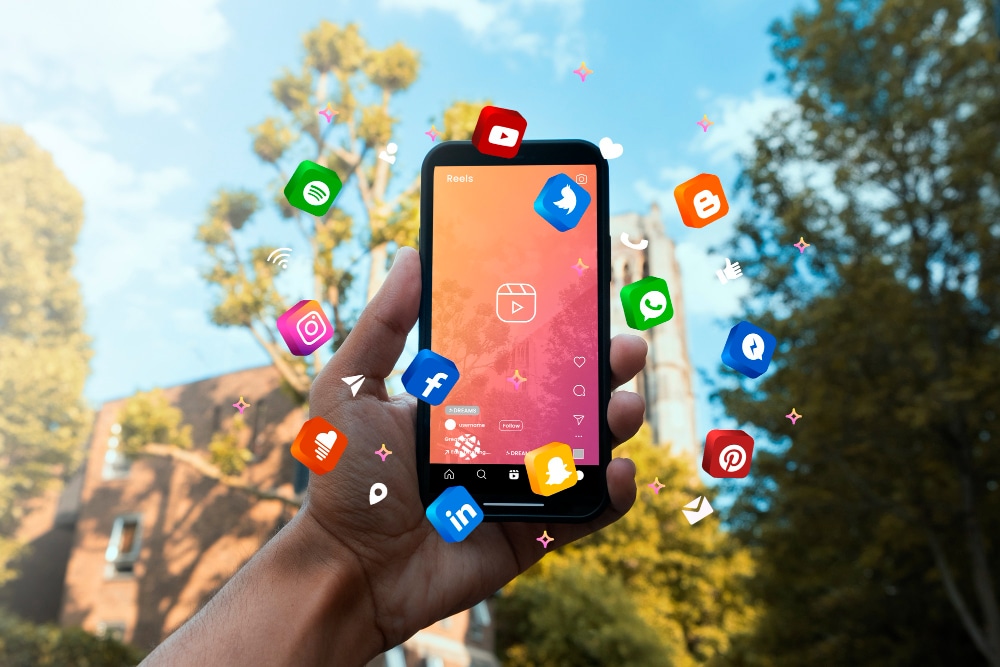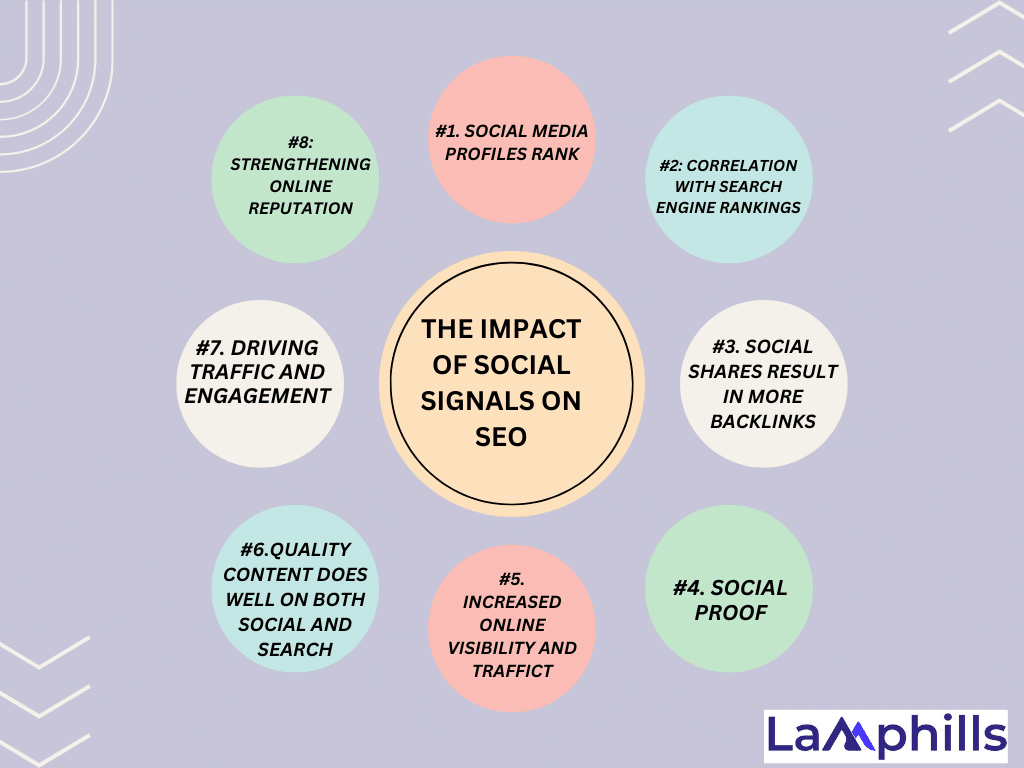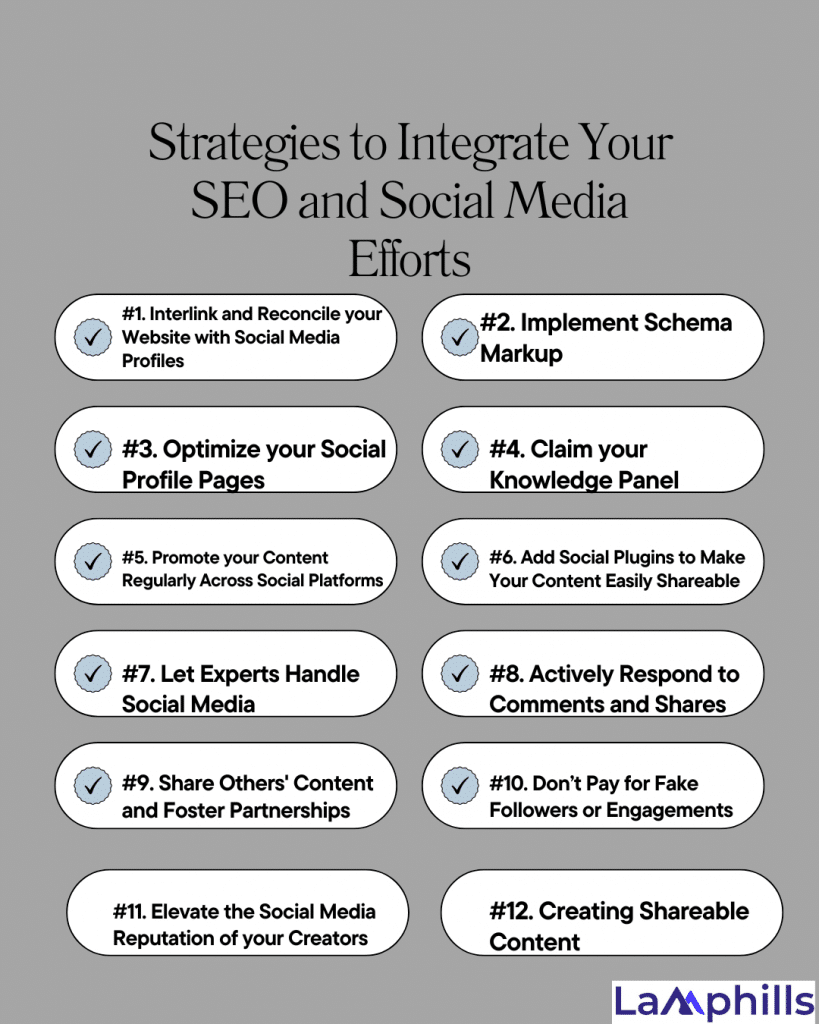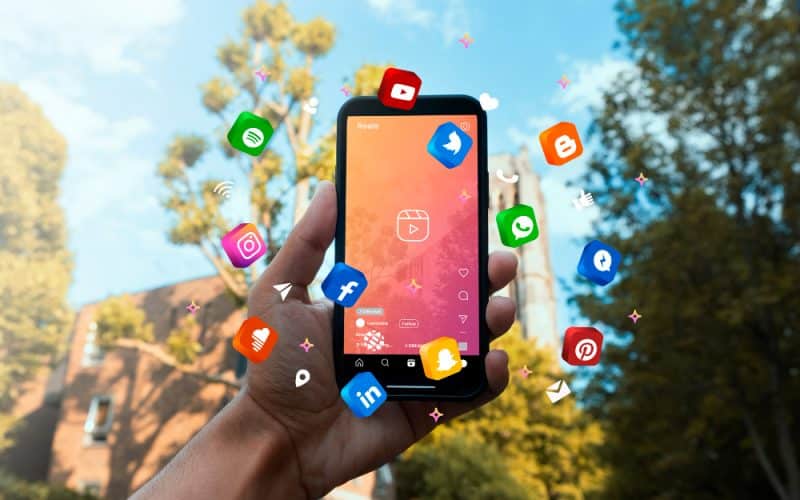A few years ago, I assisted a small bakery in navigating the turbulent waters of social media marketing. They were well-known locally for their delectable pastries but struggled to replicate their popularity online. This happened on a chilly November morning, and I was seated in a comfortable chair, brainstorming ideas with a client—a local bakery shop owner. As we sipped our steaming coffee, we thought of ways to increase her brand’s internet visibility. Little did we know that a simple Instagram post about her latest lavender-scented invention would set off a social media frenzy, resulting in thousands of likes, shares, and comments.
From that point forward, it became evident to me that social signals—those seemingly insignificant likes, shares, and comments—could be the wind behind the wings of any company’s online strategy. They go beyond vanity metrics to drastically improve your brand’s visibility and reputation. So, how can we extract this hidden value and improve our brand’s digital footprint?
Today, I welcome you to join me on a journey to uncover the hidden value of social signals, which will not only expand your understanding but also enable you to use these signals to elevate your brand’s digital footprint.
Key Takeaways
- Social signals encompass various forms of engagement, such as likes, shares, comments, and brand mentions on social media platforms. They provide valuable insights into a brand’s online presence and audience interactions.
- While not a direct ranking factor, social signals can indirectly influence SEO performance by correlating with improved search rankings, increased backlinks, and enhanced online visibility.
- Businesses can leverage social signals to elevate their digital footprint by integrating SEO and social media efforts effectively. This involves optimizing social profile pages, promoting content across platforms, and fostering engagement with the audience.
- Creating shareable and engaging content is crucial for driving social signals and improving SEO performance. Quality content that resonates with the audience can generate authentic engagement and amplify a brand’s online presence.
What Are Social Signals?

Social signals are the different forms of engagement that a piece of content receives on social media sites, including likes, shares, and comments. Businesses and marketers use them to determine how popular and relevant a piece of content is to its intended audience.
Tracking these signals is an important component of social media marketing tactics since it allows firms to see how well their material is accepted and popular among their target audience. Businesses can also utilize social signals to inform their overall marketing efforts, garnering useful input to enhance brand awareness and positively impact their online presence.
Over time, social signals have expanded to include a larger range of social media activity, such as video views and direct messages. As the world of social media marketing evolves, so do the strategies organizations use to use social signals and improve their marketing efforts. The following are some of the primary social signals that businesses should watch to increase the success of their marketing:
- Likes
- Shares
- Views
- Comments
- Click-through rates (CTR)
- Number of followers
- Brand mentions
- Influencer engagement
Social signals are the lifeblood of your digital presence. This is because likes, shares, and comments are real indications of interaction that give life to your material. In summary, it can be concluded that social signals do have an influence on site rankings but that their overall influence on SEO is currently ill-defined. This doesn’t mean that they are useless for search engine optimization, but it’s important to accept social signals for what they are: a good indicator of the reach of a site.
Are Social Signals an SEO Ranking Factor?
In 2015, Google’s John Mueller declared explicitly that social signals are not a direct ranking component. He addressed how social content can occasionally appear in search engine results pages (SERPs), resulting in traffic to your social media profiles or website. In other words, increasing the number of likes, shares, or reposts (previously retweets) for your article will not improve its ranking in Google. But it can still help your brand.
The Impact of Social Signals on SEO

The reality is that SEOs are still using studies and experimentation to discover the exact impact of social signals on SEO performance. Although there is some disagreement in the industry, we can make some strong inferences about the indirect impact that social signals have on ranking based on how confirmed ranking factors overlap with the social media presence of a website.
#1. Social Media Profiles Rank
Google indexes social media profiles, so they will appear in search results. And, because Google wants to connect websites to their social media accounts, we can be certain that Google is looking for signals that link our websites to specific profile URLs.
Although less significant than ranking for your goal keywords, branded search results are critical to your SEO reputation management approach. If you Google your company’s name, your Facebook, LinkedIn, or Twitter profile will most certainly appear on the first page.
For Twitter, Google displays the three most recent tweets in the SERP. Social signals and Google ranking factors: tweets in the SERP. A strong social media presence reflected in the SERPs can help build your audience’s trust in your brand, meaning more clicks in the future if they come across your web pages in organic search.
#2. Correlation with Search Engine Rankings
Although Google’s algorithm does not explicitly consider social signals as a ranking component, their effect cannot be underestimated. I previously worked with a tech startup that battled with SEO. We opted to concentrate on improving their social media presence by providing information that their target audience found useful—tech tips, industry news, and behind-the-scenes looks.
As their social interaction developed, we saw a huge increase in organic search traffic and ranks. Studies, such as one conducted by Hootsuite in 2018, support this fact, demonstrating a link between high social interaction and increased search ranks. The resultant increased traffic and interaction, rather than the likes and shares themselves, have a beneficial impact on your SEO.
#3. Social Shares Result in More Backlinks
Backlinks have always been the most essential ranking criteria in search engines. However, when someone tweets a link back to a web page, it does not transfer any link equity to your website in the same way that a backlink on a web page would.
However, having your content shared and spread on social media will result in increased traffic to your web pages, more eyes on your content, and a higher likelihood that a user will find the content interesting and link to it. Being seen is the first step in becoming linked. Social media is an excellent way to reach a broader audience, therefore, it may be used as part of any link-building plan.
#4. Social Proof
Social signals are frequently an indicator of high-quality material. When a piece of material is shared, liked, and commented on on social media, it can indicate to the reader that it is popular and trustworthy. We commonly refer to this effect as “social proof.”
Many websites take advantage of this by prominently displaying the number of social metrics on their content pages. Example of a Backlinko blog with “7280 shares” on the left side
This can help boost engagement and conversions on your website. It can also function in the reverse direction:
- Your content is shared and liked on social media
- People see the content being liked and shared by prominent social media accounts or influencers, which increases click-through rates from other users
- They now think of your website as credible and trustworthy
- When they see your website in the SERP, they may be more likely to click on it
#5. Increased Online Visibility and Traffic
Consider social signals to be small spotlights that illuminate your content. When a post receives a lot of engagement, social media algorithms take note and promote it to a larger audience. For example, during a campaign for a non-profit where I volunteered, we released a moving video clip about a beneficiary. The video went viral, with thousands of shares and comments, considerably increasing our website traffic. This increase in visibility not only aided our cause but also boosted our search rankings.
Content distribution refers to the act of spreading and promoting your content across several platforms and channels. Digital marketing tactics frequently use social media networks like as X, LinkedIn, and Facebook to generate website visitors through content dissemination.
By sharing blog posts, videos, and branded images, you’re putting content directly in front of potential customers. This broadens the potential for people to click on your content and increases visitor traffic to your website. It’s allowing you to cast a wide net (or broadcast) to a larger audience. People who may not know your blog or product exists. But it also increases your potential for customer engagement.
#6. Quality Content Does Well on Both Social and Search
Assume a web page has been shared thousands of times via social media. Thousands of shares may result in hundreds of thousands of likes, comments, and engagements. If a web page receives that much social proof, it most certainly includes useful content for the user.
Web pages that score well in search results frequently include strong social media signals. However, correlation does not imply causation, so there is no reason to believe that such social signals are being used by Google to assess quality and set ranks.
However, Google, like social media, rewards quality material. After all, its algorithm is based on knowledge, authority, and trust (EAT). Creating quality content will help you improve your visibility and performance in both digital channels, as long as you share your content on social media and optimize for organic SEO.
#7. Driving Traffic and Engagement
Social signals behave like magnets, attracting more viewers to your material. I recall a project with a travel blog in which we focused on making visually appealing and useful content about lesser-known destinations. Each piece was carefully written to promote sharing and commenting. What was the result? The viral nature of these social media articles contributed to a constant increase in visitors to the blog.
Similarly, BuzzFeed’s success is based on material geared for social sharing. Their articles and quizzes are designed to be widely viral, which drives massive traffic to their website via social signals. This strategy may be reproduced by focusing on material that your target audience finds engaging and worth sharing.
#8. Strengthening Online Reputation
Your online reputation is inextricably related to how your target audience perceives and engages with your content. When I oversaw social media for a local restaurant, we made an effort to react to every comment and share customer images. This active participation helped to establish a favorable reputation and promote a sense of community. People were more willing to trust and suggest us, as seen by the increased number of positive social signals.
Brands such as Wendy’s have mastered this strategy. Their humorous and responsive Twitter involvement produces social signals while also strengthening their reputation as an approachable and customer-focused business.
Strategies to Integrate Your SEO and Social Media Efforts

The relationship between social signals and SEO is significant, and any organization may use both social media and SEO methods to improve its online presence and exposure.
This means that investing in both tactics is a strategic and cost-effective way to expand. So, make sure you have the correct team members performing the everyday chores required to boost social signals. With patience and persistence, you will most likely see measurable improvements!
I am sure it is now evident that if you want the best results from your content marketing, you must have a strong SEO and social media game. So here are some verified and proven ways to enhance your social signals, and generating those additional benefits will improve the overall online visibility of your web pages.
#1. Interlink and Reconcile your Website with Social Media Profiles
We’ve already shown that increasing your brand and authority on social media can boost your SEO. Google can harmonize author and brand signals from several sources, including social media. There are two simple things you can do to help Google in its work.
The first step is to link your website to your social media networks. Your website most likely already contains links to your social profiles, which in turn link to your website. However, there is a technique to cement this relationship in Google’s eyes: use the SameAs schema markup. Here’s an excerpt of what it looks like on Ahrefs’ About page:
The highlighted element is the same property that links to other relevant Ahrefs corporate sites, such as social media profiles.
This is one of the simplest schema characteristics. The good news is that any solid, modern CMS makes it simple to include information on your sites. However, the schema is a more sophisticated topic, therefore, I recommend that you read my schema tutorial for beginners before you begin marking up your pages.
The second critical step is to align your company and product information on these key websites. The way you describe your firm and items on your website should be consistent with the descriptions elsewhere. This is vital for developing your entity in Google’s Knowledge Graph, a topic that is both relevant and complex to delve into here. In reality, it’s nothing more than mostly copy-pasting your About page to fit your other company pages.
#2. Implement Schema Markup
You can connect your social media profiles to your website and company using schema markup. Schema markup is a code that helps search engines understand your content and better represent it in the search results. There are countless ways to mark up your content. But one of the basic markups to get right is on a page that describes your company, usually your homepage or About page.
Correctly implemented schema markup allows your social profiles to show up in the knowledge panel in the SERPs. It could make it more likely for your social content to appear, too.
You can use the same schema property to connect your website and social media pages and help Google and other search engines understand that they’re connected.
The same property informs Google and other bots that the page they’re visiting is controlled by “the same as” the person or company that manages those social profiles.
In other words, you’re informing Google which social media profiles are owned and controlled by the individuals who own and manage your website (you or your company).
This enables Google to establish a link between you, your website, or your company, and any linked social media profiles. You can also accomplish this by manually adding schema markup to your website.
#3. Optimize your Social Profile Pages
Just like with a web page or blog post, your social media profile pages can benefit from on-page optimization. Including target keywords in your About Us, Services, Products, or other editable areas that different social media profiles allow can help with Google’s understanding of your website’s relationship to those keywords.
It’s important to fill out every section of your profile, as Google will be crawling and rendering the content of these pages to understand what your business is all about. Each area provides you with more opportunities to add important keywords related to your business.
#4. Claim your Knowledge Panel
Google Knowledge Panels are a SERP feature that consolidates all of the key information about a brand for users, including social media profiles.
They most often rank for branded searches, or when someone searches your business name.
Google automatically generates Knowledge Panels, meaning there is no way to submit for one if your brand does not yet have one appearing.
But if your business does have a knowledge panel, make sure you claim it. This allows you to have more direct communication with Google about the information that is populated there.
#5. Promote your Content Regularly Across Social Platforms
If you routinely create content on your website, such as blogs, articles, or ebooks, you should also promote it on your social media profiles. The more posts and material you share on social media networks, the more likely you are to receive likes, comments, shares, and engagements. Here are some suggestions for discovering methods to share your website’s information every day:
- Include links to the newest content on your website soon after it has been published.
- Post and link to any updated content when it provides new or better information to users.
- Share and link to relevant content on your website when the topic area comes up in the news, conversations, or trending topics happening in your industry.
- When a user comments with a question about a particular topic, service, or product, respond with a link to other relevant content on your website that answers their question.
These are just a few examples of ways to create social media posts that include links back to your website. Although you can certainly create posts without any links to your content, those will not help your SEO. To create any indirect benefits for SEO, your posts need to include links back to your web pages.
#6. Add Social Plugins to Make Your Content Easily Shareable
Website users are more likely to share content when it is simple to do so. Adding social plugins to your content management system allows website visitors to easily share your high-quality material on their social network profiles. Wordstream, for example, uses sticky social symbols to entice visitors to click as they navigate through blog entries.
Social signals and SEO ranking factors: social sharing buttons on blog posts. When a user clicks to share the material on social media, the post is ready without them having to do any more work to generate an engaging, shareable, and likable social media post.
#7. Let Experts Handle Social Media
Glossier’s success story exemplifies this method effectively. They develop authentic, user-generated content by involving everyday people and micro-influencers, which delivers considerable social engagement and visibility.
It’s crucial to note that I am not a social media specialist, and neither are most other SEOs (or marketers in general). I’ve run several successful organic and sponsored social media initiatives, but my understanding is limited in contrast to that of social media specialists.
It doesn’t help that many businesses are seeking unicorns who are experts across several channels. But I’ve yet to encounter somebody who is an expert in three or more marketing channels. They cannot have it all. If you don’t currently have a social media specialist on your team, I recommend hiring a consultant to help you get started.
However, if you’ve already covered this or are outsourcing it to an agency, make sure to include them in the conversation. SEO is a heterogeneous field that requires the collaboration of various channels and departments to maximize its effectiveness. After all, they can use your knowledge and data too. While you wait for experts, you can also make use of this checklist for measurement and analysis of social signals:
#8. Actively Respond to Comments and Shares
Being “active,” on social media, is part of enhancing your social signals. This includes responding to comments and shares, as well as demonstrating users that your profile is administered by a genuine person. Actively reacting to comments and shares may also result in more opportunities to share relevant connections to other pages on your website with users.
If you are busy managing other parts of your business, consider hiring a social media marketing manager or outsourcing your social media tasks to an agency.
#9. Share Others’ Content and Foster Partnerships
Other people in your sector, like you, want to grow their Facebook followers and enhance their Instagram interaction. In other words, sharing quality information from other websites might help you form partnerships and demonstrate your commitment to your industry community. Do this by retweeting other people’s articles you find useful, or thanking them for sharing your own. Repost content from Instagram that you enjoy. This could result in more shares or likes from the same accounts in the future.
#10. Elevate the Social Media Reputation of your Creators
As previously indicated, Google is paying special attention to web page content creators. Additionally, search engine crawlers are utilizing social media networks to better comprehend author authority.
So you can help elevate your creators by including author bios in your blog posts and articles. Linking to their social media profiles and tagging them while sharing their material are both approaches to improving their reputation as professional makers.
When Google sees that your web page content is created with expert authorship, Quality Raters are more likely to see your overall website as authoritative and trustworthy.
#11. Creating Shareable Content
To produce social signals, your content needs to be share-worthy. Consider the types of posts that capture your attention—they typically elicit emotion, provide value, or entertain. For example, while working with an e-commerce firm, we saw that blogs that provided behind-the-scenes glimpses into our product production process received the highest interaction. They humanized the brand and brought customers into our story, increasing their likelihood of sharing and engaging with the material.
Take cues from Tasty’s recipe films, which are excellent examples of shareable content. Their visually appealing and user-friendly style enables users to share them extensively, resulting in huge social signals.
#12. Don’t Pay for Fake Followers or Engagements
Finally, while social media engagement is useful, phony followers and engagements generated by bots or computer software are not. The reality is that social media networks are improving their ability to detect and remove bots. So, while those likes or engagements may benefit you in the short term, they are most certainly impermanent. It is not worth the risk or the cost.
Case Studies and Real-Life Examples
Let’s take a look at a few examples of renowned establishments with effective social signals,
#1. Patagonia
Patagonia is a prime example of a brand leveraging social signals effectively. Their posts about environmental activism resonate deeply with their audience, generating thousands of likes, shares, and comments. This engagement not only amplifies their message but also strengthens their brand’s connection with their audience’s values.
#2. Coca-Cola
Coca-Cola’s “Share a Coke” campaign brilliantly harnessed social signals. By encouraging people to share photos with personalized Coke bottles, the campaign created a viral wave of social media posts that boosted brand visibility and drove sales.
#3. Starbucks: Cultivating a Global Community
Starbucks, the renowned coffee chain, has mastered the art of community-building through social media. By encouraging customers to share their Starbucks experiences using hashtags like #StarbucksDate or #MyStarbucksExperience, the brand has transformed its social media channels into vibrant hubs of conversation and connection.
For instance, during their annual Pumpkin Spice Latte (PSL) campaign, Starbucks encourages fans to share photos of their first PSL of the season using the hashtag #PSL. This simple yet effective campaign not only generates a flurry of social signals but also creates a sense of anticipation and excitement among Starbucks enthusiasts worldwide.
#4. Airbnb: Harnessing User-Generated Content
Airbnb, the peer-to-peer accommodation platform, has built its brand on the power of user-generated content (UGC). By showcasing authentic photos and stories shared by hosts and guests on social media, Airbnb has created a compelling narrative around the concept of “belonging anywhere.”
For example, Airbnb’s Instagram account is filled with stunning photos of unique accommodations and memorable travel experiences shared by users. Each post generates a wave of social signals—likes, shares, and comments—that not only amplifies Airbnb’s reach but also fosters a sense of trust and authenticity among its audience.
#5. Nike: Inspiring Action Through Social Activism
Nike’s “Dream Crazy” campaign featuring Colin Kaepernick is a powerful example of leveraging social signals to drive meaningful conversations and action. By aligning the brand with Kaepernick’s message of social justice and activism, Nike sparked a global conversation and generated a flood of social signals across various platforms.
The campaign’s centerpiece—a powerful video ad narrated by Kaepernick—generated millions of views and sparked a wave of engagement on social media. Despite facing backlash from some quarters, Nike stood firm in its commitment to social activism, earning widespread praise and admiration from its audience.
As you embark on your own journey of social discovery, take inspiration from these success stories and apply their principles to your own social media strategy. By leveraging the power of authenticity, engagement, and purpose-driven messaging, you can harness the full potential of social signals to propel your brand to new heights of digital success.
What’s the Difference Between Social Signals and Social Media Metrics?
While social signals are about active interactions (likes, shares, comments), social media metrics encompass a broader range of data, such as reach and impressions. It’s like comparing a conversation at a party (social signals) to the number of people in the room (social media metrics). Both are important, but social signals give a deeper insight into how your audience is engaging with your content.
What Is Social Signal Psychology?
Humans interact with each other seamlessly, smoothly, and without obvious effort. Social signals are the basis of this highly effective communication. These signals are speech utterances, body movements such as gestures, manipulations of objects, and combinations thereof.
Does Google Use Social Signals?
No, Google does not directly use social signals to determine ranking. Social signals can indirectly influence your SEO efforts in several ways. For instance, a tweet that goes viral can lead to increased website traffic and potentially new backlinks.
What Are Backlinks, and Why Are They Important?
Backlinks are links on websites other than your own that go back to a page on your website.
Conclusion
Social signals, like social media, are not a magical SEO secret weapon that can produce good rankings in a matter of minutes. However, the same holds true for all other SEO strategies, and a one-sided marketing plan is unlikely to be successful in today’s climate. To accomplish successful search engine optimization, many tactics must be used in tandem and complement each other. Social signals can thus help your business succeed, but only when accompanied by solid content, active participation on social media networks, and other SEO methods.
Okay, I have one more tip before I wind things up. Most businesses fall short of this goal.
Don’t stop distributing content just because you have a new piece of content. Or, even worse, when it’s the next day and you’ve already sent out the necessary social media post.
It is absolutely acceptable and beneficial to send out the same or comparable content on social media repeatedly within a suitable time range. People who see it once will not necessarily see it again, and even if they do, they are unlikely to remember it.
So, as you plan your next social media post, consider how you may generate those important social signals. Whether it’s through interesting content, active audience participation, or clever collaborations, every signal you generate is a step towards a more visible and trusted brand.
References
- www.wix.com
- wordstream.com






